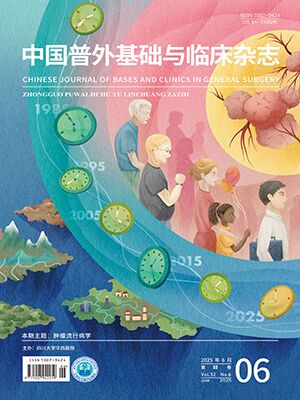| 1. |
易丽夏, 方涵露, 李婧怡, 等. 2022年全球和中国胰腺癌发病及死亡分析. 海军军医大学学报, 2024, 45(12): 1470-1477.
|
| 2. |
Global Burden of Disease Collaborative Network. Global Burden of Disease Study 2021 (GBD 2021) Results. Seattle, United States: Institute for Health Metrics and Evaluation (IHME), 2022.
|
| 3. |
Wang X, Xiu R, Gong L, et al. Unraveling the global burden of inflammatory bowel disease (1990-2019): a Joinpoint regression analysis of divergent trends in 10-24 and 50-69 age cohorts. Autoimmun Rev, 2024, 23(6): 103586. doi: 10.1016/j.autrev.2024.103586.
|
| 4. |
Jian Y, Zhu D, Zhou D, et al. ARIMA model for predicting chronic kidney disease and estimating its economic burden in China. BMC Public Health, 2022, 22(1): 2456. doi: 10.1186/s12889-022-14959-z.
|
| 5. |
杨青龙. 全球与中国2型糖尿病疾病负担的变化模式及预测研究. 成都: 成都医学院, 2024.
|
| 6. |
Cai J, Chen H, Lu M, et al. Advances in the epidemiology of pancreatic cancer: trends, risk factors, screening, and prognosis. Cancer Lett, 2021, 520: 1-11.
|
| 7. |
时保国, 吴少龙. “看病难”的空间分析: 嵌入分层理论视角的中国三甲医院地理分布. 甘肃行政学院学报, 2019(5): 94-103, 128.
|
| 8. |
Sun D, Li H, Cao M, et al. Cancer burden in China: trends, risk factors and prevention. Cancer Biol Med, 2020, 17(4): 879-895.
|
| 9. |
GBD 2021 Demographics Collaborators. Global age-sex-specific mortality, life expectancy, and population estimates in 204 countries and territories and 811 subnational locations, 1950-2021, and the impact of the COVID-19 pandemic: a comprehensive demographic analysis for the Global Burden of Disease Study 2021. Lancet, 2024, 403(10440): 1989-2056.
|
| 10. |
Ilic M, Ilic I. Epidemiology of pancreatic cancer. World J Gastroenterol, 2016, 22(44): 9694-9705.
|
| 11. |
McGuigan A, Kelly P, Turkington RC, et al. Pancreatic cancer: a review of clinical diagnosis, epidemiology, treatment and outcomes. World J Gastroenterol, 2018, 24(43): 4846-4861.
|
| 12. |
Yang J, Xu R, Wang C, et al. Early screening and diagnosis strategies of pancreatic cancer: a comprehensive review. Cancer Commun (Lond), 2021, 41(12): 1257-1274.
|
| 13. |
Dbouk M, Katona BW, Brand RE, et al. The multicenter cancer of pancreas screening study: impact on stage and survival. J Clin Oncol, 2022, 40(28): 3257-3266.
|
| 14. |
Lee SY, Sissoko M, Hartshorn KL. Update on the management of pancreatic cancer in older adults. Curr Oncol Rep, 2016, 18(10): 60. doi: 10.1007/s11912-016-0547-4.
|
| 15. |
Lin QJ, Yang F, Jin C, et al. Current status and progress of pancreatic cancer in China. World J Gastroenterol, 2015, 21(26): 7988-8003.
|
| 16. |
Zhao H, Zhang Y, Liu H, et al. Age-period-cohort analysis of global, regional, and national pancreatic cancer incidence, mortality, and disability-adjusted life years, 1990-2019. BMC Cancer, 2024, 24(1): 1063. doi: 10.1186/s12885-024-12835-0.
|
| 17. |
Amri F, Koulali H, Jabi R, et al. Pancreatic cancer: experience from an emerging country in North Africa. J Cancer Res Clin Oncol, 2023, 149(15): 14297-14302.
|
| 18. |
唐钧. 世界和中国的人口老龄化及其原因. 社会政策研究, 2022(3): 3-18.
|
| 19. |
糜跃萍, 胡迪, 蔡波, 等. 1990–2019年江苏省胰腺癌疾病负担和危险因素分析. 疾病监测, 2022, 37(10): 1376-1382.
|
| 20. |
周聪雅, 金龙, 张苏, 等. 糖脂代谢与胰腺癌患者预后相关性分析. 陕西医学杂志, 2023, 52(9): 1218-1220.
|
| 21. |
刘永鹏, 张晶晶, 任艳, 等. 1990–2019年中国胰腺癌疾病负担变化趋势研究. 现代预防医学, 2022, 49(17): 3079-3085.
|
| 22. |
Yuan C, Kim J, Wang QL, et al. The age-dependent association of risk factors with pancreatic cancer. Ann Oncol, 2022, 33(7): 693-701.
|
| 23. |
王婷, 秦毅, 徐晓武, 等. 2024年胰腺癌研究及诊疗新进展. 中国癌症杂志, 2025, 35(1): 1-11.
|
| 24. |
闫明玥, 湛先保, 彭小波. 胰腺癌患者的全程管理. 现代肿瘤医学, 2024, 32(23): 4555-4561.
|
| 25. |
韩家伟. 胰腺癌新辅助/转化治疗后影响预后临床因素的筛选及预后模型的建立和验证. 上海: 中国人民解放军海军军医大学, 2023.
|
| 26. |
王馨慧, 刘小英, 付文胜. 胰腺癌的中医药治疗研究进展. 中国中西医结合消化杂志, 2022, 30(4): 303-307.
|
| 27. |
Gram IT, Park SY, Wilkens LR, et al. Smoking and pancreatic cancer: a sex-specific analysis in the multiethnic cohort study. Cancer Causes Control, 2023, 34(1): 89-100.
|
| 28. |
Zhao Z, Liu W. Pancreatic cancer: a review of risk factors, diagnosis, and treatment. Technol Cancer Res Treat, 2020, 19: 1533033820962117.
|




